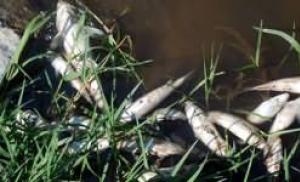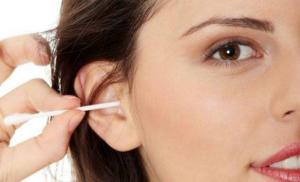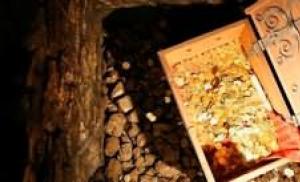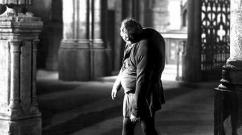Prostaglandins, sources of formation, role in the process of life. Intracellular hormones - prostaglandins (PG)
PROSTAGLANDINS
hormone-like substances that are synthesized in almost all tissues of the body, including the walls blood vessels. They are involved in the regulation of blood pressure, uterine contractions and a number of other physiological processes. Prostaglandins are small molecules that belong to eicosanoids, a group of fat-like substances (lipids). This group also includes compounds with a similar chemical structure - leukotrienes, which play a role in inflammatory processes and allergic reactions, and thromboxanes involved in blood clotting. All eicosanoids are formed from a common precursor - arachidonic acid, which belongs to the class of unsaturated fatty acids and is synthesized from another fatty acid - linolenic acid, which enters the human body with food. Prostaglandin molecules consist of 20 carbon atoms, forming a five-membered ring with two chains of seven and eight carbon atoms attached to it. Depending on the chemical structure of these chains, prostaglandins belong to one series or another (A, B, C, D, E, F, G, H and I). Each series includes several prostaglandins, differing in the arrangement of atoms and chemical bonds in the side chains. For example, the A series includes prostaglandins A1 (PGA1) and A2 (PGA2). In 1930 it was discovered that seminal fluid can stimulate contraction of the uterine muscles. A similar phenomenon was subsequently observed in other smooth muscles. Because these active substances were initially thought to be secreted by the prostate (prostate gland), they were called prostaglandins. In the 1950s, S. Bergström from the Karolinska Institute in Stockholm isolated a number of prostaglandins and established them. Another Swedish scientist, B. Samuelson, discovered the biochemical mechanisms of their synthesis and metabolism. In 1971, the English researcher J. Vane reported that aspirin and indomethacin, which is similar in structure, block the synthesis of prostaglandins. Apparently, the anti-inflammatory and antipyretic effect of these drugs is determined precisely by the suppression of prostaglandin synthesis. Scientists now believe that prostaglandins play a key role in both inflammation and fever. In recognition of the importance of these discoveries, Wein, Bergstrom and Samuelson received Nobel Prize in physiology and medicine. Many prostaglandins are stimulants of smooth muscle, especially the uterus and intestinal muscles, and are used clinically in abortion and to stimulate labor contractions. Prostaglandins can have different effects on the smooth muscles lining blood vessels: some cause them to contract, others relax. It is also known that prostaglandins are capable of modulating the action of a number of hormones on cells.
Collier's Encyclopedia. - Open Society. 2000 .
See what "PROSTAGLANDINS" are in other dictionaries:
Big Encyclopedic Dictionary
PROSTAGLANDINS, a group of related FATTY acids having a skeleton of 20 carbon atoms and containing a cyclopentane ring. Their action is similar to that of hormones. Present in SPERM, liver, brain and other tissues. Their biological effects... ... Scientific and technical encyclopedic dictionary
Biologically active substances found in the tissues and organs of most animals and humans, and in some plants. According to chemistry naturally occurring fatty acids with a skeleton of 20 carbon atoms and containing a cyclopentane ring. Initially P.... ... Biological encyclopedic dictionary
See also: Prostaglandins (anti-ulcer drugs) Prostaglandin E1 Prostaglandins (Pg) group of lipid physiologically... Wikipedia
Prostaglandins- The most important derivatives of arachidonic acid are prostaglandins, endogenous substances that act in small doses as hormones and have the basic structure of prostanic acid. Prostaglandins influence the regulation of blood flow, kidney function and... ... Official terminology
- (Greek prostates standing, located in front + lat glandula gland), a group biologically highly active substances, contained in the tissues and organs of most animals and humans, and in some plants. Initially they were considered... ... Sexological encyclopedia
PROSTAGLANDINS- A group of hormones produced in minute quantities by cells of various tissues of mammals. They have a variety of physiological effects: they cause contraction of muscles (especially the muscles of the uterus), affect blood pressure, glands... ... Terms and definitions used in breeding, genetics and reproduction of farm animals
Mammalian hormones with a wide range of physiological effects. Discovered in 1936 in human seminal fluid by the Swedish scientist W. Euler and initially considered the secretion of the prostate gland (novolat. glandula prostatica; hence... ... Big Soviet encyclopedia
- (PG), biologically active lipids, which are derivatives of hypothetical. prostanovoy kty (fla I) and differing in the position of substituents and double bonds in the cyclopentane ring and side chains. P. molecules have a skeleton of 20 C atoms... Chemical encyclopedia
A group of physiologically active substances produced in negligible quantities by cells of various tissues of most animals and humans. They have a variety of physiological effects: they cause contraction of smooth muscles (especially... ... encyclopedic Dictionary
Books
- Biologically active substances in physiological and biochemical processes in the animal’s body, M. I. Klopov, V. I. Maksimov, The manual outlines modern ideas about the structure, mechanism of action, role in the vital processes and functions of the body of biologically active substances (vitamins, enzymes,... Category: Veterinary. Animal science Series: Textbooks for universities. Special literature Publisher: Lan,
- Biologically active substances in physiological and biochemical processes in the animal’s body textbook, Klopov M., Maksimov V., The manual outlines modern ideas about the structure, mechanism of action, role in vital processes and body functions of biologically active substances (vitamins, enzymes, ... Category :
Prostaglandin is a compound that literally permeates our entire body; its influence is reflected at all levels of regulation and control of physiological reactions and processes of our body, such complex ones as, for example, stimulation of pregnancy. Prostaglandins have the ability to change the intensity of enzymes, activate the production of hormones and direct their action on all our physiological processes. An imbalance of these elements instantly leads to the development of a number of diseases in our body.
What are these elements, what type of physiologically active components do they belong to? In every living organism, an infinite number of some elements pass into others, and this constant flow of elements determines physical existence life. Microbiological processes in the human body are very well structured and strictly balanced, the material and time schedule and sequence of events of the systems are specifically defined.
How does such a precise order work in infinitely complex biological systems? What functions of the body allow it to maintain orderly operations? The answer will be this: this precise and strict sequence of physiological processes is possible only thanks to the action of a regulator such as prostaglandin. It is involved in such important processes as stimulating pregnancy, inducing childbirth and many others.
How is prostaglandin formed? The biosynthesis of prostaglandins is as follows. In one type of cell, only one specific type of prostaglandin and the corresponding hormone are always reproduced. In a single human organ, prostaglandins are always present in pairs with mutually opposite actions, like two poles of a magnet. The reproduction of prostaglandins leads to the fact that the amount of each of these elements of the pair in the organ determines the state of the organ, whether it is normal or impaired functioning.
For example, in cells respiratory system Prostaglandin F2 and prostaglandin E2 are produced. The hormone prostaglandin F2 is reproduced in lung tissue and is intended to stimulate bronchial tissue, and prostaglandin E2 is reproduced in the bronchi, but performs the exact opposite function - it suppresses the activity of the bronchial muscles.
Modern scientific experiments have shown that increased production of prostaglandin F2a and a decrease in the amount of E2 leads to the emergence and progression of all kinds of bronchial asthma. Thus, an abnormal ratio of prostaglandin F2a and prostaglandin E2 is observed in patients suffering from pneumonia and bronchitis and in patients in need of stimulation of pregnancy.
The hormone prostaglandin I2 and the hormone prostaglandin A2 are reproduced in our blood, which by their nature of action are also antagonists. The hormone prostacyclin, produced in the cells of the walls of blood vessels, prevents platelets from sticking to the walls and creating blood clots, and the hormone thromboxane, on the contrary, increases their stickiness, that is, it promotes the process of blood clotting, which stops bleeding.
In a healthy mode, the joint opposition of prostacyclin and thromboxane is balanced, which allows the blood to have both a fluid state and rapid clotting and healing to stimulate pregnancy.
The human brain contains prostaglandins of almost all groups studied by science. The brain synthesizes mainly prostaglandin D2, which is considered the main prostaglandin of nervous tissues. Prostaglandins produced in the brain ensure proper heartbeat, lung rate, thermostatic function of the body, participate in stimulating pregnancy and other important processes in the human body.
In the reproductive organs, as a rule, the same prostaglandins are synthesized as in the organs of the pulmonary system - F2 and E2, but in the genital organs their concentration is much higher than in any other body system. Currently, scientists are actively studying the role of prostaglandins produced in seminal fluid.
Latest Scientific research show that during pregnancy the preparation of the cervix is carried out not only under the influence of hormones, but also, to an important extent, under the influence of prostaglandins. In the case of pregnancy, we can talk about two types: the E2 hormone and the F2α hormone. It has been established that prostaglandin E2, like other inhibitor drugs, is synthesized not only in the inner part of the placenta, but also in the body of the fetus, and even more in the tissues of the cervix, especially during its stimulation.
Prostaglandins influence the modification of the tissue structure of the cervix, progressing its development, and these drugs also stimulate an important tonic effect on the isthmus when stimulating pregnancy, the cervix and lower part of the uterus during stimulation of pregnancy. If there is a characteristic stage of development of the cervix, under the influence of E2, the activation of labor gradually begins. This means that E2 plays the starting role in the onset of labor.

Inhibitors and prostaglandin F2α are synthesized in the gendered part of the placenta and in the tissues of the uterus. This hormone, like other drugs (inhibitors), accompanies the process of labor, having a very strong and narrowing effect, helping to reduce blood loss during labor and childbirth.
Preparing the cervix for childbirth requires the use of the most biologically based activators of the labor process, most often drugs containing prostaglandins. The use of prostaglandin E2 leads not only to the development of the cervix, but also stimulates contraction of the myometrium, which serves as a starting mechanism for the onset of labor.

The method of using E2 received its greatest development when unique gels were invented, with different names, which included a special precise concentration of the drug. As a rule, in order to obtain the required degree of maturity of the cervix and its readiness for childbirth, such a gel is injected into the cervical canal. But in order for the drug to be used effectively and not cause various complications, when using it you need to follow a number of rules and observe the required contraindications.
The rationale for using the gel in preparing the cervix arises when the patient’s physiological readiness for childbirth is inhibited. Another justification may be an indication for emergency delivery in case of all kinds of operating or other violations.
Pharmacology
All drugs of groups E2 and F2 are of wide importance in medicine, even taking into account their fabulous prices. They are used to artificially induce labor and terminate pregnancy. WHO even opened a unique Program on the use of hormones for medical abortion. Very high price prostaglandins, which were excreted biosynthetically, forced numerous scientific studies to find more accessible methods of synthesis.
Preparations E2 and F2 are synthesized by biochemical methods, but their scope is so wide and the need for such drugs is so high that up to today there are still not enough of them. Today, these hormones are considered as a kind of a new group medications: in addition to obstetrics, they are widely used to help patients with cardiovascular diseases and respiratory system disorders. They even started trying to use them in agriculture to speed up selection.
But the use of highly purified hormones is not only very expensive - it is very difficult to achieve the correct effect of their action. They are very unstable and for this reason, not being able to use highly purified hormones, scientists are trying to find areas of application where their artificial analogues can be effective. This area of medical science is developing rapidly, and there is hope that the time is not far off when such necessary drugs will become widely available and cheap.
The most famous medical use belongs to E1. In small medicinal doses, it inhibits the formation of blood clots, which means it serves as a panacea for all the most terrible varieties cardiovascular diseases, which have become the main problem of our time, sparing neither the elderly nor the young.
Prostaglandins were discovered in the 30s. as substances contained in seminal fluid and having a pronounced ability to cause contraction of the smooth muscles of the uterus. The name "prostaglandins" was proposed by Euler to designate the active principle, presumably originating from the prostate gland.
Prostaglandins are a series of endogenous unsaturated carboxy acids containing 20 carbon atoms and having a cyclopentane ring.

Substances of this type, formed from polyunsaturated fatty acids containing 20 carbon atoms (for example, arachidonic acid), are designated by the term “eicosanoids” (prostaglandins, thromboxanes, leukotrienes). The structure of prostaglandins is similar to prostanoic acid, and they are classified as autocoids (autocoids are substances contained in tissues that have high pharmacological activity, but do not function as neurotransmitters or “classical” hormones in a given tissue “local hormones”). Autocoids also include kinins, histamine, and purine nucleotides, which have a wide range of pharmacological activity. The synthesis of these compounds occurs in many tissues in response to a variety of stimuli.
Prostaglandins are derivatives of essential fatty acids that are part of cell membranes. In mammals, their main precursor is arachidonic acid, which is released from membranes under the influence of phospholipase A2 in response to various mechanical and chemical stimuli. With the participation of a complex of microsomal enzymes (the first of them is cyclooxygenase), fatty acids are transformed into primary prostaglandins through endoperoxide forms G2 and H2.

In the nomenclature of prostaglandins, it is customary to designate the type of ring with letters (A-F), the number indicates the number of double bonds in the side chains, and “alpha” or “beta” are determined by the configuration of hydroxyls at position 9 in prostaglandins of the F series (natural). Prostaglandin I1 (prostacyclin) and thromboxane A (TXA) are also formed from endoperoxides.
Prostaglandins have a wide range of physiological activities. Prostaglandin G2 has a powerful bronchodilator effect. causes vasodilation and chemokinesis. It is the main prostaglandin released by mast cells in lung tissue. Thromboxane and prostacyclin have opposite effects on vascular tone and platelet aggregation. The lipoxygenase pathway of arachidonic acid biotransformations leads to the formation of leukotrienes, which play a key role in the genesis of anaphylactic and other reactions.
Prostaglandins influence gastric function in two ways: they reduce secretion and have a protective (cyto/histoprotective) effect. Prostaglandins G, A and I2 inhibit secretion stimulated by food, histamine, and gastrin. The volume of secretion, acidity and peptic activity of the secretion decrease. The secretion of the stomach and small intestine is activated. The flow of water and electrolytes into the intestinal lumen increases, which can lead to concomitant “watery” diarrhea. The latter effect is not characteristic of prostaglandin I2.
The antisecretory effect of prostaglandins is associated with their direct effect on the secretory cellular elements of the stomach, manifested in a decrease in nocturnal secretion, acid production, stimulated by food, caffeine, pentagastrin and histamine. Currently, specific prostaglandin receptors have been identified on the membranes of parietal cells.
The gastroprotective effect in the experiment ("acute" cytoprotection) is manifested by the ability of prostaglandins to prevent necrosis of the mucosa when exposed to anti-inflammatory drugs, absolute ethanol, HCl or NaOH solutions, hypertonic saline solution, taurocholate. The protective effect of prostaglandins is dose dependent and is more pronounced when the drugs are taken orally than when injected. It develops very quickly (within 1 minute when administered orally) and lasts up to 2 hours. In humans, prostaglandin E2 in subantisecretory doses prevents hidden bleeding after taking aspirin, indomethacin, and prevents exfoliation of the mucosa caused by 40% ethanol. It is noted that the synthesis of prostaglandin E2 in cell culture of the antral and fundal parts of the mucous membrane of patients with duodenal ulcers is approximately 50% of the normal level.
In animal experiments, it is possible to reveal the dose dependence of the antisecretory and cytoprotective effects of prostaglandins. The protective effect was observed at doses lower than those that blocked secretion. However, in humans the differences in these doses are smaller. Prostaglandins have a clear protective effect, in particular when taking aspirin (assessed by hemorrhagic reactions in the form of release of red blood cells into the gastric contents or by vascular permeability to dyes).
The most important phenomenon reflecting protective properties prostaglandins, - the ability to preserve mucosal microvessels (vasoprotection) under aggressive influence on them. Protective action prostaglandins are determined by the following factors:
1. Changing the function and composition of the cell membranes of the gastric endothelium, reducing vascular permeability, which allows maintaining sufficient blood flow in the organ and ensuring its function and reparative processes.
2. Stabilization of the mucous barrier, especially with chronic exposure to damaging factors. It was revealed that prostaglandins increase mucus secretion, which is accompanied by an increase in the content of markers such as hexosamines and acetylneuraminic acid in the gastric juice. 5 minutes after the administration of prostaglandin E2 at a dose that does not affect HCl secretion, the mucus layer becomes 2-3 times thicker. This gel protects the mucous membrane from aggressive chemical influences and increases the gradient of H+ ions.
3. Stimulation of bicarbonate secretion due to activation of the gastric sodium pump, which helps neutralize H+ ions and prevents their reverse diffusion (the last 2 effects are indicated in Fig. 3.2).
4. Improving blood flow in the vascular system of the gastric mucosa and increasing the efficiency of microcirculation.
As is known, the gastric mucosa produces its own prostaglandins, especially types E2 and I2. These autocoids inhibit HCl secretion and increase mucus secretion. Irritants, which in large doses cause mucosal necrosis, in small doses enhance adaptive cytoprotection due to prostaglandins. It has been established that irritants themselves are able to prevent their own necrotizing effect when administered within 15 minutes, and this effect is eliminated by indomethacin, a cyclooxygenase inhibitor. Probably, prostaglandin cytoprotection is a physiological response to the effects of potentially damaging substances and physical factors. Irritating agents such as alcohol, food spices, HCl, pepsin, when applied to the skin, cause inflammation, while the stomach is relatively resistant to their effects. The unique resistance of the gastric mucosa may be due to the constant production of gastroprotective prostaglandins. It is important to note that the ulcerogenic effect of nonsteroidal anti-inflammatory drugs appears to be largely due to their ability to inhibit the synthesis of prostaglandins in the gastric mucosa and increase the reverse diffusion of H+ ions.
The main disadvantage of natural prostaglandins is the short duration of the effect. Their synthetic analogues are more stable in the body, on the basis of which a number of drugs tested in the clinic have been obtained. Misoprostol (15-deoxy-16 hydroxy-16-methylprostaglandin E1) is a synthetic analogue of prostaglandin E1 and contains 2 stereoisomers. The drug (more than 80%) is absorbed into gastrointestinal tract. An acidic metabolite is formed in the body, which is the active principle. Clearance is almost exclusively hepatic. Misoprostol has a therapeutic effect for gastroduodenal ulcers in an antisecretory dose of 800 mcg in 2-4 doses (during or after meals and at night) for a course of about 4 weeks with a possible extension (if necessary) up to 8 weeks.
The drug arbaprostil (15-(K)15-methylprostaglandin E2-arbacet) at a cytoprotective dose of 40 mcg/day did not show a reliable antiulcer effect in duodenal ulcers, however, positive results were observed at antisecretory doses of 100-600 mcg/day. Much attention is paid to another synthetic analogue of prostaglandin E1-rioprostil. At a dose of 600 mcg (in 2 doses or at night), the drug reduces acid production and increases bicarbonate secretion. The therapeutic effectiveness of rioprostil is comparable to that of H2-histamine blockers. The clinical use of enprostil (70 mcg in 2 doses or at night), timoprostil (up to 3 mcg), ornoprostil, and rosaprostil is also reported.
Typical side effects of prostaglandins are secretory diarrhea, abdominal pain; in women, disorders are possible menstrual cycle, and during pregnancy, the threat of abortion increases. A clear opinion about their antiulcer potential has not yet been formed.
The action of anti-aggressive and gastroprotective drugs is focused on eliminating or preventing imbalance, conflict between aggression and defense. Another important goal in the treatment of gastroduodenal ulcers is their speedy healing by stimulating recovery processes. To achieve this goal, a variety of agents are recommended, defined as healing stimulants and grouped under the general name “reparants.” Remedies include drugs that, according to experimental and clinical data, can accelerate the healing process of erosive and ulcerative defects of the gastric mucosa and duodenum. Most of these drugs are complex in nature, and their mechanism of action is not well understood.
To activate protein synthesis in gastroduodenal ulcers, analogues of pyrimidine bases were proposed - methyluracil (methacyl, 0.5 g tablets) and pentoxyl (0.2 g tablets). In the experiment, pyrimidine bases have an anabolic anti-catabolic effect, accelerate cell regeneration, healing of wounds and burns, both locally and systemically.
The ability to stimulate regenerative processes in epithelial tissues has also been revealed in the aminoadenine derivative - etadene (ampoules of 5 ml of 1% solution for intravenous administration). Therapeutic effect The drug is explained by its effect on the metabolism of nucleic acids.
The anabolic steroids methandrostenolone (Nerobol, tablets of 1 and 5 mg) and retabolil (nandrolone, ampoules of 1 ml of 5% oil solution for intramuscular administration) are quite widely used as reparatives. Anabolic steroids are derived from male sex hormones. Their androgenic effect is minimal while maintaining an anabolic effect on protein metabolism. When they are used, the nitrogen balance becomes positive, the release of urea, potassium, sulfur, and phosphorus decreases. Patients have increased appetite, increased muscle mass. To ensure the effect, a diet adequate in protein, mineral and vitamin composition is necessary. Anabolic steroids facilitate the period of convalescence after severe injuries, infections, surgeries, and burns. For gastroduodenal ulcers, Nerobol is prescribed for a course of 2-3 weeks, 10-15 2-3 doses. Retabolil is administered intramuscularly once a week, 2-4 times a day.
It should be remembered that treatment with anabolic steroids is fraught with undesirable effects. In women, androgenic effects may occur (menstrual irregularities, deepening of the voice, hair growth). male type). The drugs can cause dyspeptic disorders and cholestatic jaundice. They are prescribed for inflammation and tumors of the prostate gland.
Potassium orotate and ATP preparations are also prescribed as non-steroidal stimulants of metabolic processes. Positive results were obtained in the study of various biogenic stimulants, in particular solcoseryl (ampoules of 2 ml), which is a non-protein extract of calf blood. When used locally and systemically, solcoseryl accelerates tissue regeneration in cases of ulcerative lesions, burns, frostbite, bedsores, and transplantations.
Biogenic stimulants include liquid aloe extract, Kalanchoe juice, apilak, propolis, FIBS, befungin (birch cup mushroom extract), etc.
Sea buckthorn and rosehip oil are widely prescribed as reparatives. They are rich in carotene, carotenoids, vitamins E, F, and contain substances that are believed to enhance reparative processes. Under the influence of sea buckthorn oil in the homogenate of the gastric mucosa, the content of acetylneuraminic acid increases and the level of peroxides decreases. These drugs do not affect motor and secretory functions. Both oils have proven themselves to be effective in the treatment of burns, wounds, external ulcers, and cervical erosions. For gastroduodenal ulcers, a course of treatment with oil is prescribed (orally).
The drug alanton is made from the roots of elecampane. Elecampane roots contain 1-3% essential oil, the crystalline part of which (gelenin) consists of a mixture of lactones alantolactone, its iso- and dihydroanalogues and alantonic acid. A decoction of elecampane reduces the tone and peristalsis of the isolated intestinal preparation, has an antisecretory effect, reduces the formation of bile and its secretion; it also has antiseptic and anthelmintic properties. To speed up the scarring of stomach and duodenal ulcers, it is recommended to take Alanton in courses of 1 tablet 3-4 times a day before meals.
For complex therapy of peptic ulcer, gastrofarm is used. It contains the bacterial bodies of Lactobacillus bulgaricus and its metabolic products, sucrose. Approximately 20-30% general composition the drug is protein. Gastrofarm is prescribed 1-2 tablets 30 minutes before meals 3 times a day in monthly courses. The daily dose can be increased to 8-12 tablets. The drug does not have a significant antacid effect.
Most processes in our body depend on prostaglandins, which are produced by almost all tissues. They are often considered hormones, but they are not. They act predominantly at the site of synthesis, after which they undergo destruction. Hormones exert their influence at a distance and are secreted only by the endocrine glands, and not by most tissues.
Prostaglandin synthesis
Let's look at the process of formation of this substance in the body. Prostaglandin is a substance formed during the metabolism of arachidonic acid; they belong to eicosanoids. Fatty acids are part of phospholipids, which are found in all tissues. Under the influence of phospholipase A2, arachidonic acid breaks down, after which it enters the cyclooxygenase or lipoxygenase metabolic pathways. Prostaglandins are a product of the former.
What is its role in the body?
Eicosanoids have many functions. Prostaglandin is a substance that takes an active part in most processes occurring in our body. For example, prostaglandin E has a depressant effect, that is, it helps reduce blood pressure, affecting vascular tone. In addition, prostaglandins (drugs and natural) activate the contractile function of the myometrium, due to which they are used to stimulate labor. These substances help increase the synthesis of mucus produced by the stomach. Slime performs protective function, preventing the action of aggressive factors on the mucous membrane. In addition, thanks to these substances, the formation of pepsin and hydrochloric acid is suppressed, which is effectively used in the treatment of stomach diseases associated with increased secretion of these substances. They also affect the blood by inhibiting platelet aggregation. Prostaglandin E affects the smooth muscle cells of the trachea and bronchi, it promotes their relaxation, and, consequently, the expansion of the airways. The role of prostaglandins in inflammation and pain is important. These substances not only directly affect nerve endings and fibers, but are also involved in the appearance of other signs of inflammation. Changes in vascular tone under the influence of prostaglandins lead to hyperemia, and an increase in the permeability of their walls is the cause of the formation of edema. Prostaglandins, in addition, influence causing nausea and vomiting. Patients often encounter this side effect. Prostaglandins - drugs (names below) are used only according to strict indications.

Interaction between prostaglandins and anti-inflammatory drugs
Prostaglandin is a direct participant inflammatory process. The action is based on reducing their synthesis (the enzyme cyclooxygenase is blocked). Long-term use of NSAIDs leads to a lack of prostaglandins, resulting in a disruption of the barrier function of the stomach - a decrease in mucus secretion. This is the main side effect of these medications.
Prostaglandins - drugs: names
Such medicines are used primarily for diseases of the stomach and duodenum of an erosive and ulcerative nature. In addition, they are prescribed to stimulate myometrial contraction and improve blood rheology.

"Misoprostol"
Prostaglandins (drugs) are widely used in the treatment of gastric and duodenal ulcers due to their antisecretory activity. This action is due to the effect on prostaglandin receptors, which are located on the stomach. Thus, Misoprostol acts as a natural prostaglandin. Stimulation of mucus formation helps protect the mucous membrane and prevents the occurrence of new ulcerative lesions. All this also creates favorable conditions for healing ulcers and erosions.
"Alprostadil"
The medicine is a prostaglandin E preparation. It is usually prescribed in cases where increased myometrial contraction is required - stimulation of labor. The drug is also used to improve blood circulation - inhibit platelet aggregation and dilate blood vessels (for atherosclerosis). Available in ampoules for intravenous administration.
Contraindications
Both drugs are not prescribed if there is hypersensitivity to prostaglandins, as well as to analogues of these substances. Contraindications include age under 18, pregnancy and period breastfeeding. They are also taken with caution in case of renal and liver failure, pathologies of the endocrine system, enterocolitis, and anemia.

Self-administration of prostaglandin preparations without consulting a specialist is not allowed. Only a doctor can select the correct dosage and adjust the treatment plan, taking into account the individual characteristics of the patient. The price will vary depending on the place of purchase. Prostaglandin is released in different forms and under different brands, this also affects the cost.
Side effects
The most common side effects that occur when taking medications are: digestive system- nausea, vomiting, diarrhea and dyspeptic disorders. If there is an allergy, itching, rash, hyperemia and swelling are noted, and anaphylactic reactions are also possible. Taking medications may be accompanied by menstrual irregularities and dysmenorrhea. Contraction of the myometrium is often characterized by pain in the lower abdomen. Among the others side effects- dizziness, headache, fluctuations in body weight.

Development risk level side effects individual for each patient. If you observe such phenomena, you should contact your doctor and change your treatment plan.
Prostaglandin is a substance necessary in the treatment of peptic ulcers and other pathologies. They are usually combined with other drugs to achieve the desired effect. The choice of medication and its dosage depend on the clinical case and individual characteristics patient.
Prostaglandins, among other compounds, are called pain mediators that act on pain receptors (nociceptors). Analgesics reduce prostaglandin levels.
Story
Prostaglandin was first isolated in 1935 by the Swedish physiologist Ulf von Euler from seminal fluid, so the term "prostaglandin" comes from Latin name prostate gland (lat. glandula prostatica) . Later it turned out that prostaglandins are synthesized in many tissues and organs. In 1971, John Wayne discovered that aspirin is an inhibitor of prostaglandin synthesis. For his research on prostaglandins, he and Swedish biochemists Sune Bergström and Bengt Samuelsson received the 1982 Nobel Prize in Physiology or Medicine.
Biochemistry
Biosynthesis
Prostaglandins are found in almost all tissues and organs. They are autocrine and paracrine lipid mediators that act on platelets, endothelium, uterus, mast cells and other cells and organs. Prostaglandins are synthesized from essential fatty acids (EFAs).
| Fatty acid | NLC type | Type |
| Gamma-linolenic acid (GLA) through DGLK | ω-6 | Type 1 |
| Arachidonic acid (AA) | ω-6 | Type 2 |
| Eicosapentaenoic acid (EPA) | ω-3 | Type 3 |
An intermediate is formed by the action of phospholipase A2, which is then converted by either the cyclooxygenase or lipoxygenase pathway. The cyclooxygenase pathway synthesizes thromboxanes, prostacyclin, and prostaglandins D, E, and F. The lipoxygenase pathway, which is active in leukocytes and macrophages, produces leukotrienes.
Secretion from the cell
Previously, it was believed that after synthesis, prostaglandins leave the cell due to passive diffusion, since they have significant lipophilicity. However, prostaglandin transporter protein (PGT, SLCO2A1) was later discovered, which mediates the cellular uptake of prostaglandins. Secretion is carried out by other proteins: multidrug resistance protein 4 (MRP4, ABCC4) from the ATP-binding cassette transporter family and, possibly, other transporters that are still unknown.
Cyclooxygenases
The synthesis of prostaglandins occurs in two stages: oxidation under the action of cycloxygenase and the final prostaglandin synthase. There are two types of cyclooxygenases: COX-1 and COX-2. It is believed that COX-1 determines the basal level of prostaglandins, and COX-2 triggers the synthesis of prostaglandins when stimulated (for example, during inflammation).
Prostaglandin E synthase
Prostaglandin E 2 (PGE 2) is formed by prostaglandin E synthase from prostaglandin H 2 (PGH 2). Several prostaglandin E synthases have been discovered. It is believed that microsomal prostaglandin E synthase-1 is the key form of the enzyme that synthesizes PGE 2.
Functions
Comparison of different types of prostaglandins prostacyclin, prostaglandin E 2 (dinoprostone) and prostaglandin F 2α.
| Type | Receptor | Function |
|---|---|---|
| Prostacyclin | IP |
|
| Prostaglandin E 2 | EP 1 |
|
| EP 2 |
|
|
| EP 3 | ||
| EPO | ||
| Prostaglandin F 2α | FP |
|
see also
Write a review about the article "Prostaglandins"
Notes
Links
|
||||||||||||||||||||||||||||||||||||||||||
An excerpt characterizing Prostaglandins
Returning this time from vacation, Rostov for the first time felt and learned to what extent his connection with Denisov and with the entire regiment was strong.
When Rostov drove up to the regiment, he experienced a feeling similar to the one he experienced when approaching the Cook's House. When he saw the first hussar in the unbuttoned uniform of his regiment, when he recognized the red-haired Dementyev, he saw the hitching posts of red horses, when Lavrushka joyfully shouted to his master: “The Count has arrived!” and shaggy Denisov, who was sleeping on the bed, ran out of the dugout, hugged him, and the officers came to the newcomer - Rostov experienced the same feeling as when his mother, father and sisters hugged him, and the tears of joy that came to his throat prevented him from speaking . The regiment was also a home, and the home was invariably sweet and dear, just like the parental home.
Having appeared before the regimental commander, having been assigned to the previous squadron, having gone on duty and foraging, having entered into all the small interests of the regiment and feeling himself deprived of freedom and shackled into one narrow, unchanging frame, Rostov experienced the same calm, the same support and the same consciousness the fact that he was at home here, in his place, which he felt under his parents’ roof. There was not all this chaos of the free world, in which he did not find a place for himself and made mistakes in the elections; there was no Sonya with whom it was or was not necessary to explain things. There was no option to go there or not to go there; there weren’t these 24 hours of the day that so many different ways could be consumed; there was not this countless multitude of people, of whom no one was closer, no one was further; there were no these unclear and uncertain financial relations with his father, there was no reminder of the terrible loss to Dolokhov! Here in the regiment everything was clear and simple. The whole world was divided into two uneven sections. One is our Pavlograd regiment, and the other is everything else. And there was nothing else to worry about. Everything was known in the regiment: who was the lieutenant, who was the captain, who was a good person, who was a bad person, and most importantly, a comrade. The shopkeeper believes in debt, the salary is a third; there is nothing to invent or choose, just don’t do anything that is considered bad in the Pavlograd regiment; but if they send you, do what is clear and distinct, defined and ordered: and everything will be fine.
Having entered again into these certain conditions of regimental life, Rostov experienced joy and tranquility, similar to those that a tired person feels when he lies down to rest. This regimental life was all the more gratifying for Rostov during this campaign because, after losing to Dolokhov (an act for which he, despite all the consolations of his family, could not forgive himself), he decided to serve not as before, but in order to make amends, to serve well and to be a completely excellent comrade and officer, i.e. wonderful person, which seemed so difficult in the world, but so possible in the regiment.
Rostov, from the time of his loss, decided that he would pay this debt to his parents in five years. He was sent 10 thousand a year, but now he decided to take only two, and give the rest to his parents to pay off the debt.
Our army, after repeated retreats, offensives and battles at Pultusk, at Preussisch Eylau, concentrated near Bartenstein. They were awaiting the arrival of the sovereign to the army and the start of a new campaign.
The Pavlograd regiment, which was in that part of the army that was on the campaign in 1805, was recruited in Russia, and was late for the first actions of the campaign. He was neither at Pułtusk nor at Preussisch Eylau in the second half of the campaign, joining active army, was assigned to Platov’s detachment.
Platov's detachment acted independently of the army. Several times the Pavlograd residents were in units in skirmishes with the enemy, captured prisoners and once even recaptured the crews of Marshal Oudinot. In April, Pavlograd residents stood for several weeks near an empty German village that had been destroyed to the ground, without moving.
There was frost, mud, cold, the rivers were broken, the roads became impassable; For several days they did not provide food to either the horses or the people. Since delivery became impossible, people scattered across abandoned desert villages to look for potatoes, but they found little of that. Everything was eaten, and all the inhabitants fled; those who remained were worse than beggars, and there was nothing to take from them, and even little - compassionate soldiers often, instead of taking advantage of them, gave them their last.
The Pavlograd regiment lost only two wounded in action; but lost almost half of the people from hunger and disease. They died so surely in hospitals that soldiers, sick with fever and swelling resulting from bad food, preferred to serve, dragging their feet to the front rather than go to hospitals. With the opening of spring, the soldiers began to find a plant emerging from the ground, similar to asparagus, which they called for some reason Mashkin’s sweet root, and they scattered across the meadows and fields, looking for this Mashkin’s sweet root (which was very bitter), dug it up with sabers and ate it, despite to orders not to eat this harmful plant.
In the spring, a new disease appeared among the soldiers, swelling of the arms, legs and face, the cause of which doctors believed was the use of this root. But despite the ban, the Pavlograd soldiers of Denisov’s squadron ate mainly Mashka’s sweet root, because for the second week they were stretching out the last crackers, they were only given half a pound per person, and the potatoes in the last parcel were delivered frozen and sprouted. The horses had also been eating thatched roofs from houses for the second week; they were hideously thin and covered with tufts of matted winter hair.













